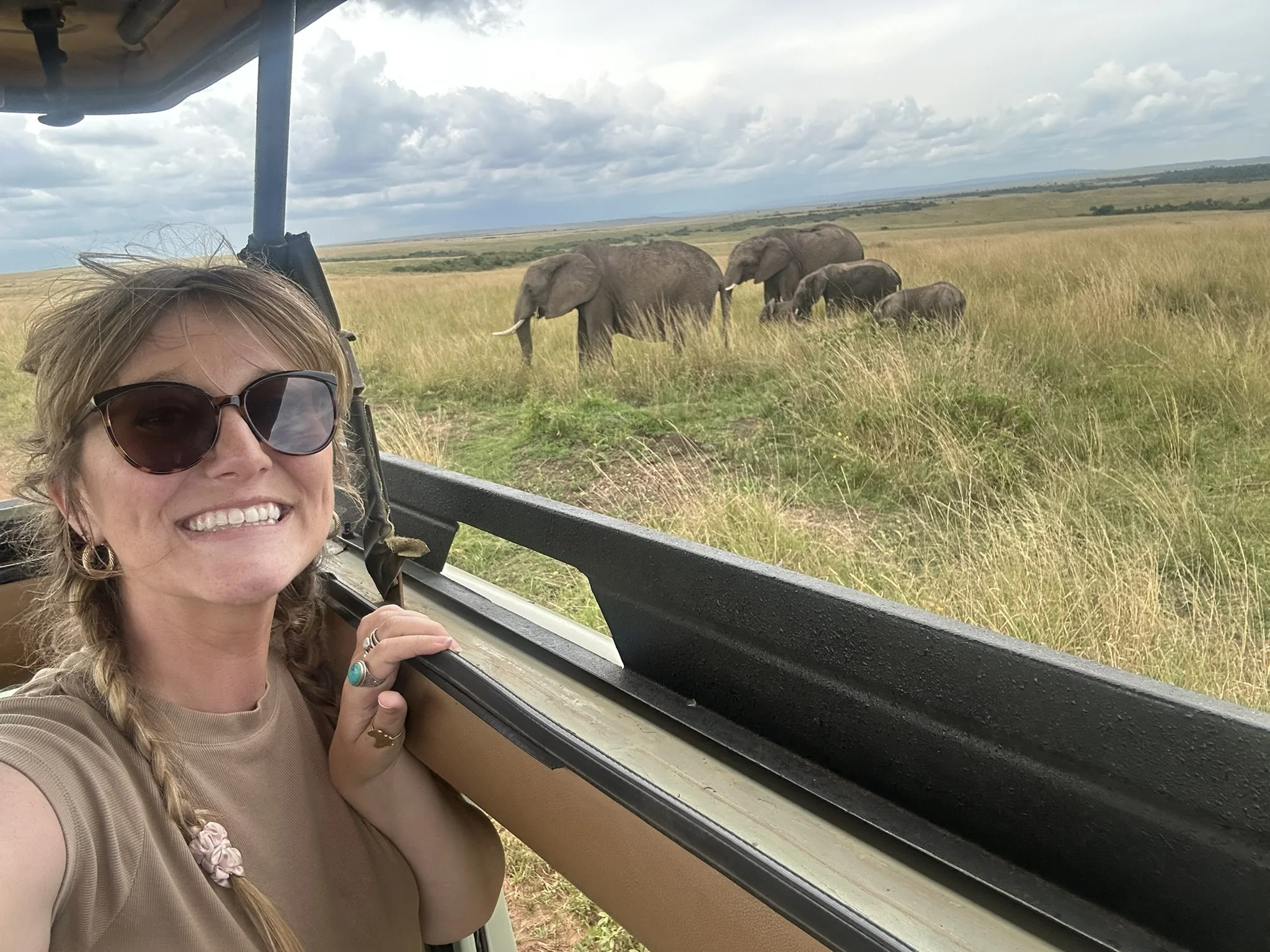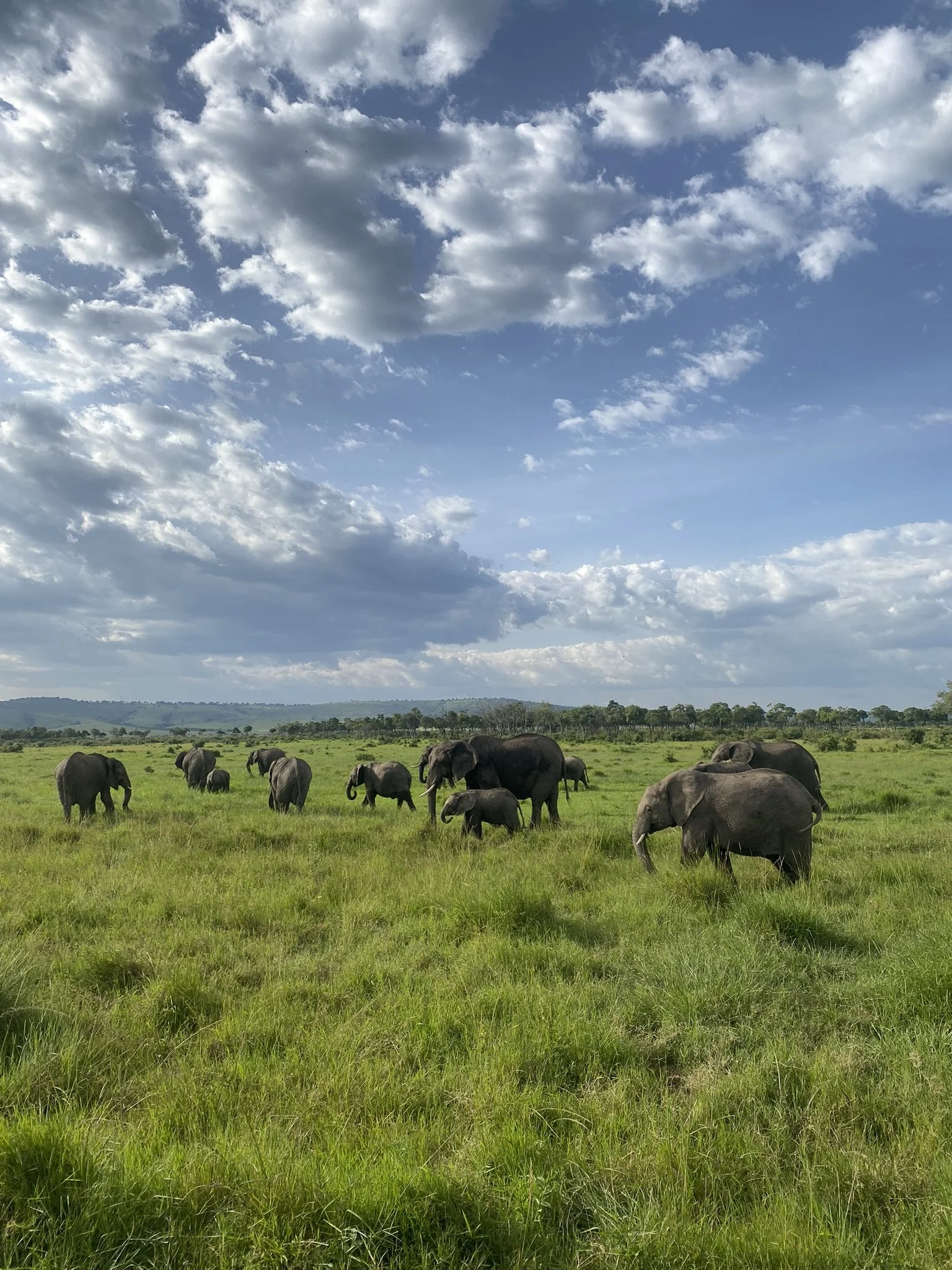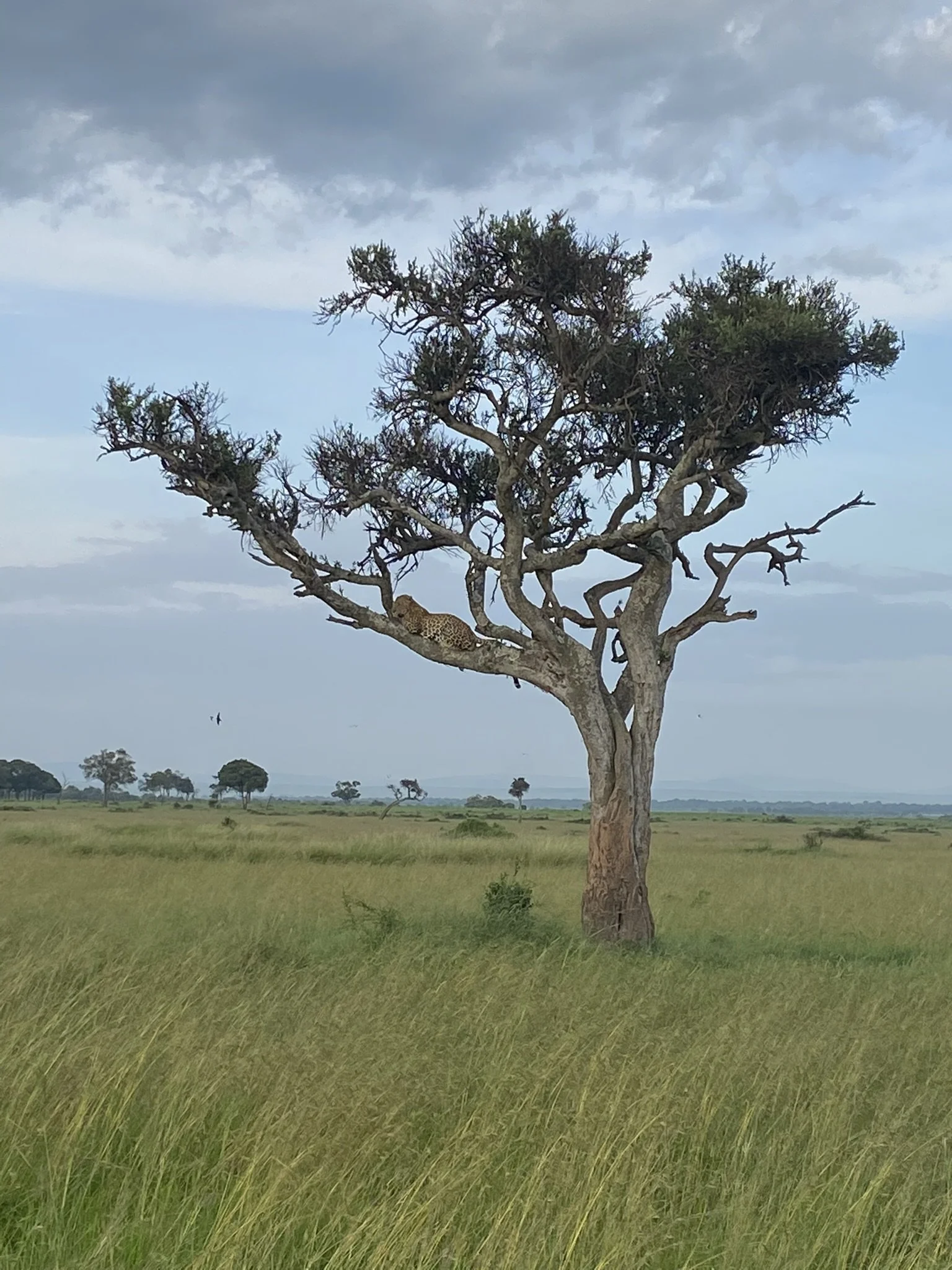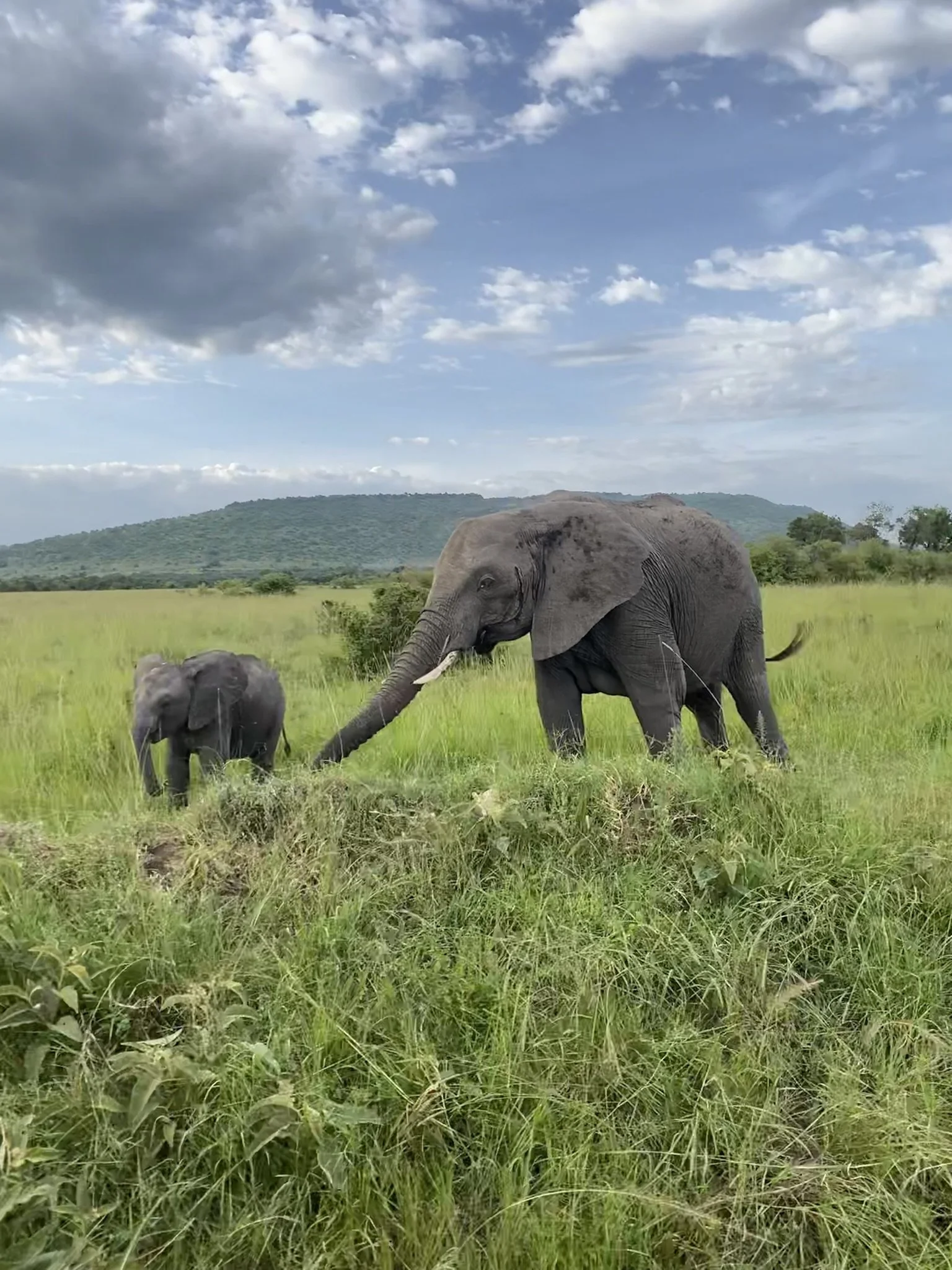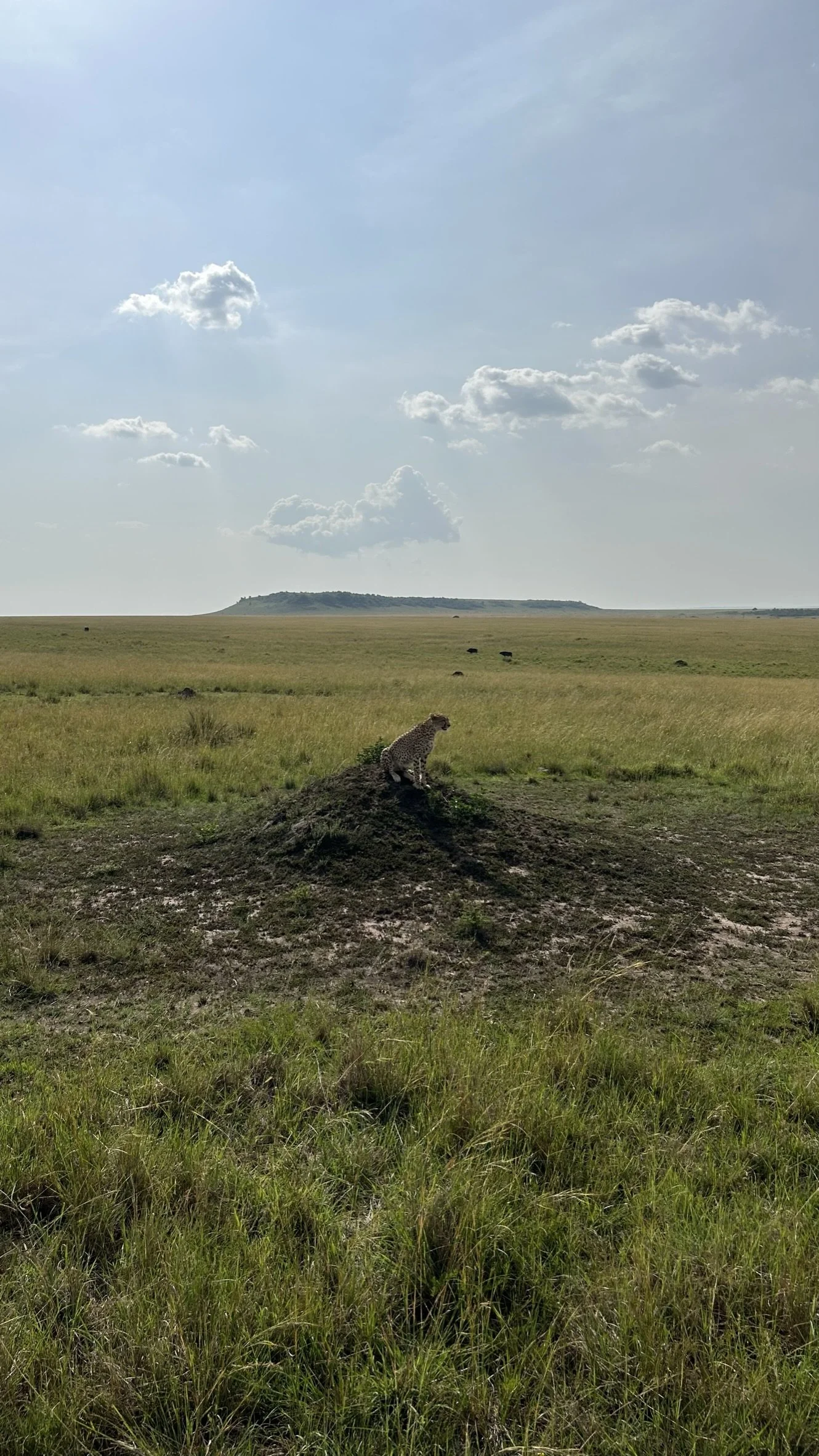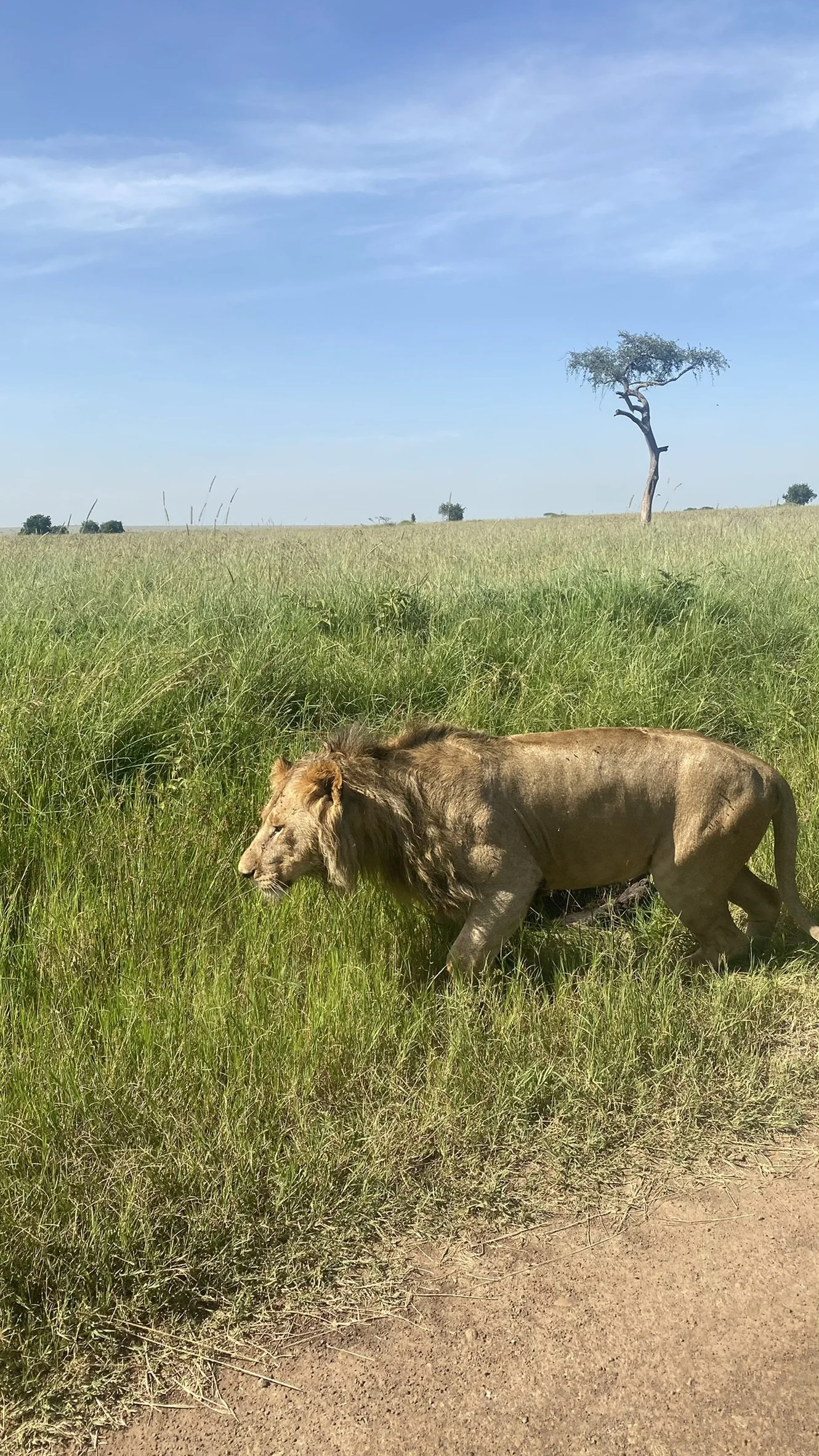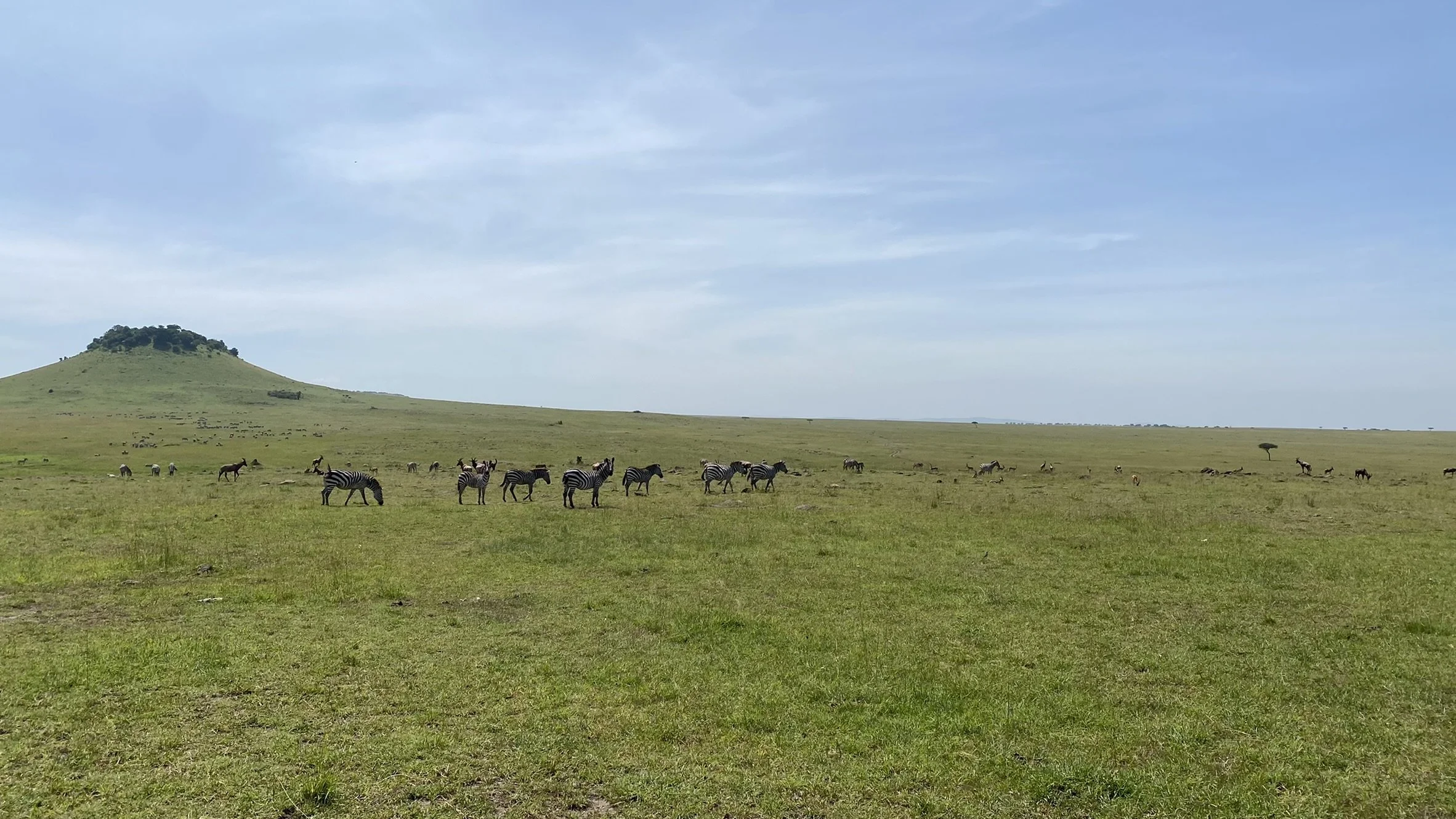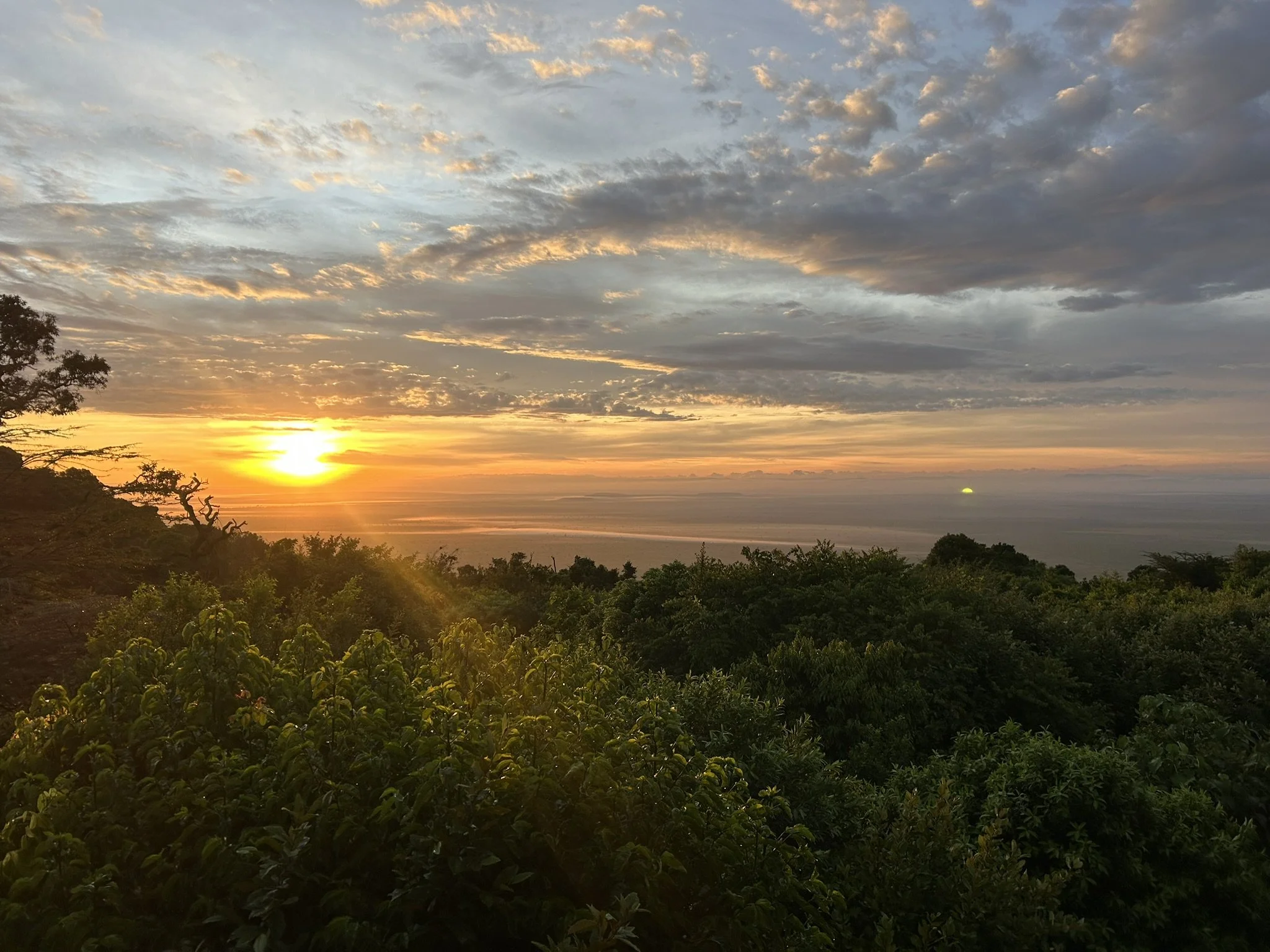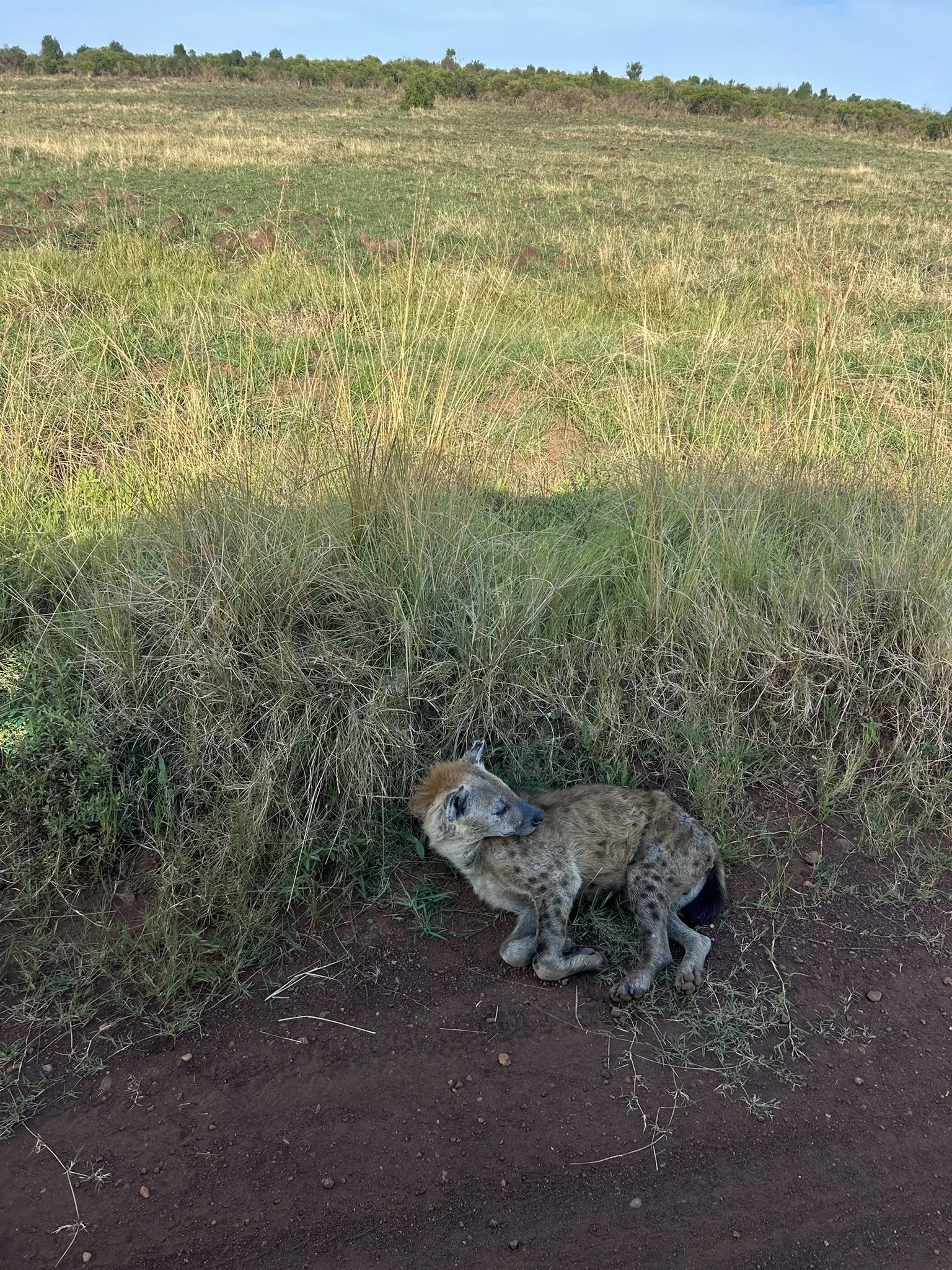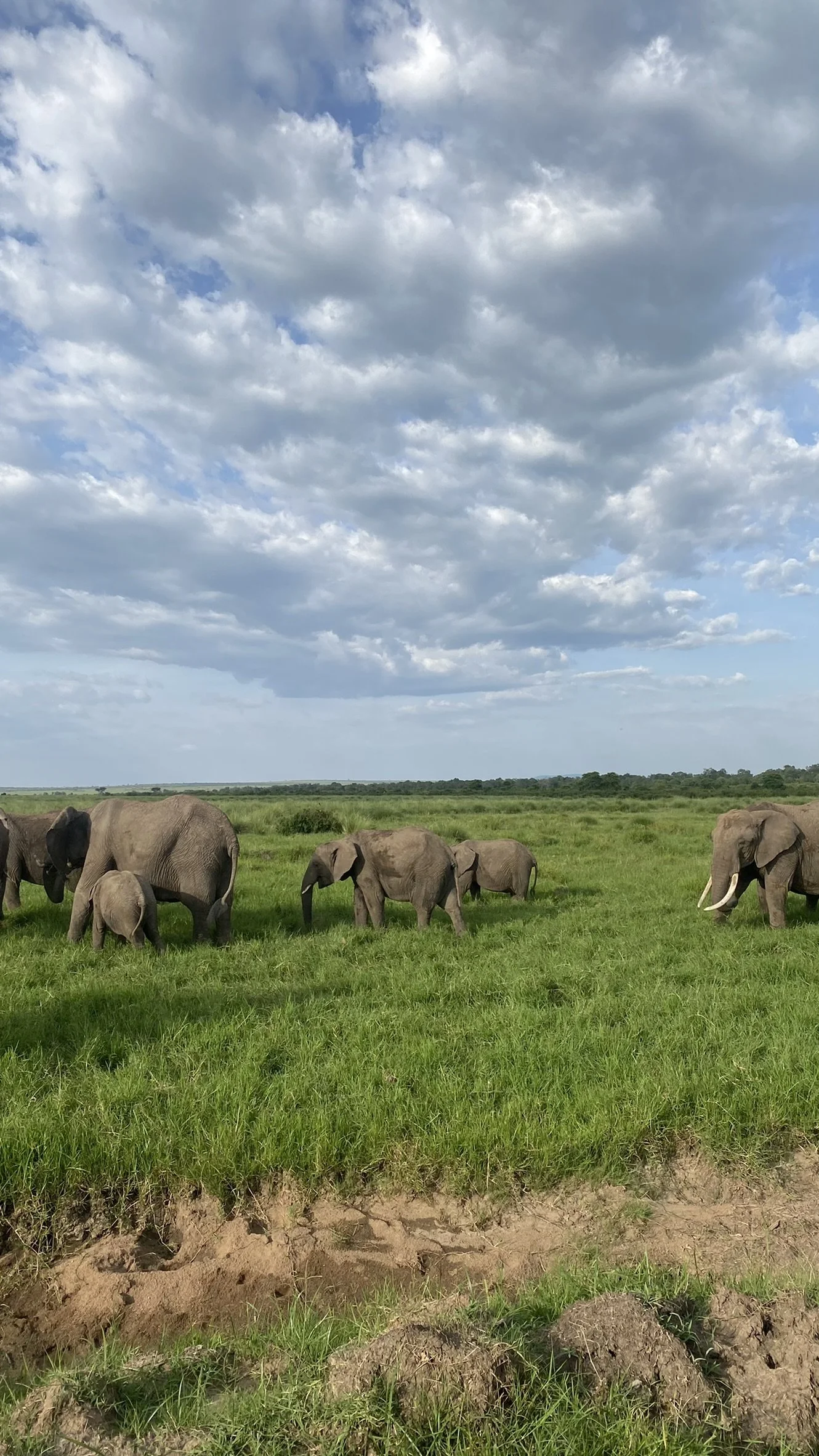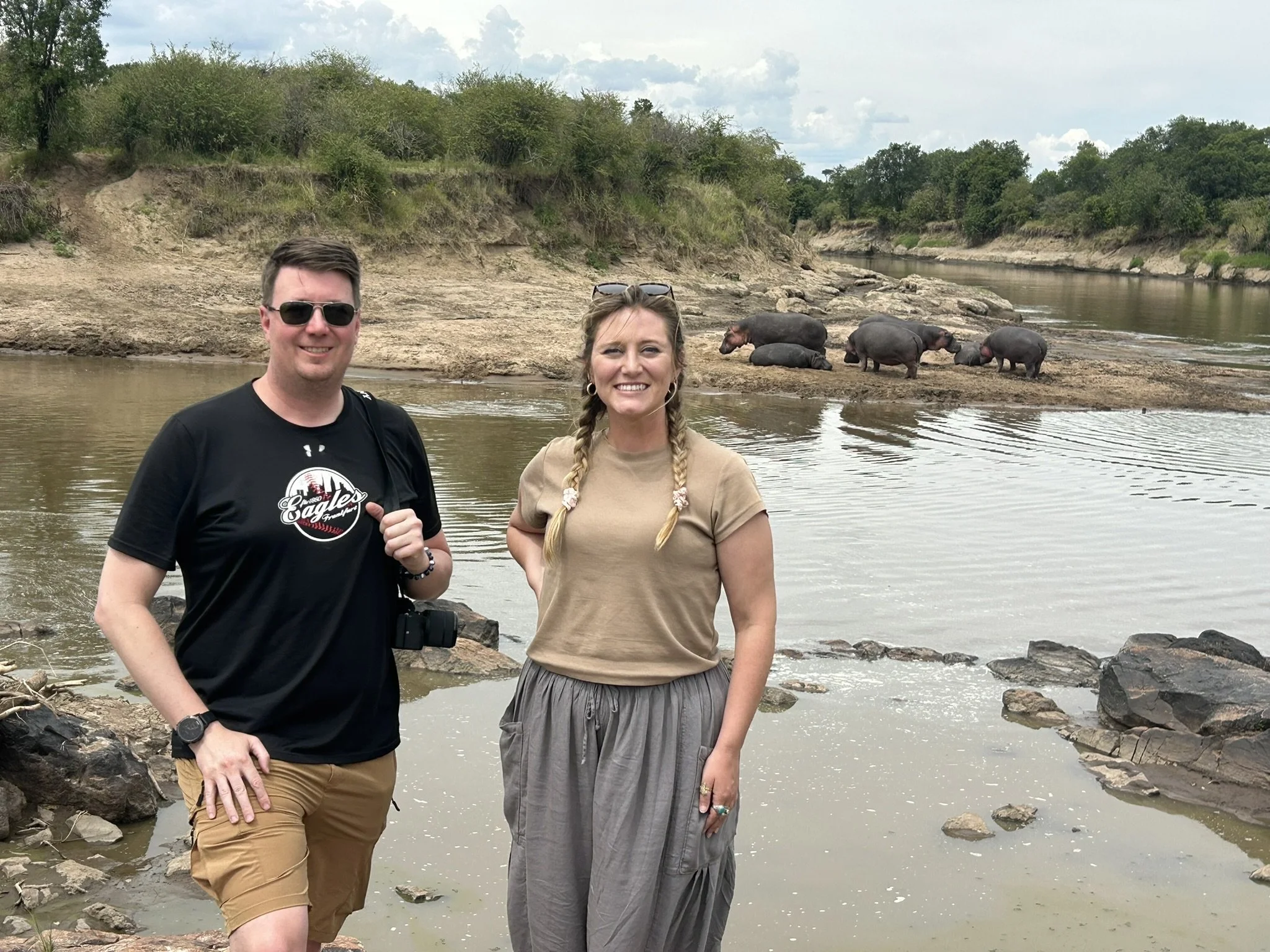Safari | A First Glimpse of the Mara
📍Maasai Mara, Kenya
I can still feel the quiet awe of that first morning — waking before sunrise, wrapping my Kenyan Laiso tighter around my shoulders, and stepping into the early morning hush that blankets the Mara. The land stretched out in every direction, wild and wide and wonderfully still.
We were only a few hours into our trip into the park when we spotted our first elephants, meandering slowly through the acacia trees. One calf, still wobbly and curious, kept bumping into its mother’s legs—just like the littles at the art table when they’re learning something new. 🐘💛
There’s a sacred rhythm to life out here. You feel it in the earth, in the sky, in the way the sun rises like a soft promise and sets with a hush that feels like reverence. Herds move together across vast plains, and you begin to understand—viscerally—that this is a place where nature leads.
The Maasai Mara National Reserve is part of one of the most breathtaking ecosystems in the world. Spanning roughly 1,510 square kilometers (that’s 580 square miles of open grasslands and scattered acacia trees), it connects directly to Tanzania’s Serengeti National Park to the south—together forming the vast Mara-Serengeti ecosystem.
While the Serengeti is larger, the Mara is known for its higher density of wildlife, making it easier to spot the Big Five: lions, leopards, elephants, buffaloes, and black rhinos. You’ll also find cheetahs lounging in the tall grass, hippos floating lazily in the river, zabra grazing peacefully, giraffes nibbling on treetops, and hundreds of bird species flying overhead.
And then there’s the event—the Great Migration. From July to October, over a million wildebeest and hundreds of thousands of zebras and gazelles thunder across these plains in search of greener pastures. The Mara River crossings are heart-pounding—where determination meets danger as crocodiles and lions lie in wait. It's one of the greatest natural shows on Earth.
For those who prefer the skies over safari roads, the Mara is also accessible by air. Small bush planes land daily on airstrips tucked within the reserve—Ol Kiombo, Keekorok, Musiara, and more. These quick 45-minute flights from Nairobi’s Wilson Airport offer a scenic, time-saving way to reach the heart of the wild.
